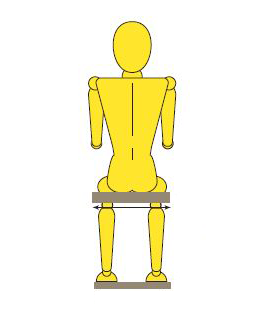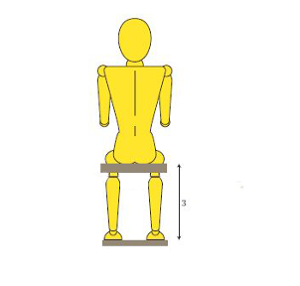Proper measurements are crucial to ensure you are getting the right chair – one that is comfortable and caters to your pressure management and support needs. A chair too tight to a patient’s body could cause friction. A chair too big, may not provide proper pressure management or allow for too much bodily rotation.
Every Seating Matters chair is specifically made to suit the patient’s clinical needs and suit their individual dimensions, so it is important that we do get the correct measurements before making your custom chair. I have trained Seating Specialists around the world to carry out thorough Seating Assessments that include taking accurate measurements. If you live in an area that does not have one of my local Seating Specialists, taking measurements might fall to you.
Keep reading on for our simple steps to collect accurate patient measurements.

General Tips on How To Measure For a Therapeutic Wheelchair:
-
Two people are needed to measure someone correctly.
-
The person being measured must be seated.
-
Use a measuring tape and write down the dimensions clearly.
-
Account for bulky clothing.
-
The measuring tape should be laid flat, rather than wrapped around the person’s body.
-
Note any bodily rotation in the trunk and/or lower extremities while seated.
To Measure Seat Width:
Seat width measures the seat and determines cushion size as well as the distance between each arm.

When measuring seat width, consider which part of the patient’s seat is the widest apart (hips or knees). If the hips are widest apart, place a flat hand on each hip. With a measuring tape, measure the length from the outside edge of each hand. If the patient’s hips are abduct, their knees will likely be the widest distance. In this case, you need to measure from the outer edge of each knee. Note whether or not the patient’s knees are “windswept” to one side, they may require additional accessories to support or correct this.
To Measure Seat Depth:

Seat depth determines how long the patient’s seat will be. It is the length from the back of the butttocks to behind the knee. To measure it, place one hand on the back of the person being measured. With your other hand, place two fingers behind the patient’s knee. Measure from the palm of your hand to the edge of your closest finger, leaving about 1 inch of space to the patient’s knee.
To Measure Seat Height:
Seat height measures the seat to floor (or footplate) length. It’s measured from behind the patient’s knee to the sole of their foot while seated. It’s important to measure this correctly as up to 19% of someone’s weight is distributed through their feet while sitting.  Just be sure to measure both legs, as some people’s legs can be different lengths or have different support needs.
Just be sure to measure both legs, as some people’s legs can be different lengths or have different support needs.
To Measure Back Height:
Back height determines the length from the top of a person’s head to seat.

To measure, ensure the person’s body is fully loaded in their chair. Measure from the top of the person’s head, to the top of the cushion seat.
To Measure Arm Rest Height:

Arm rest height will determine where the arms rest. You want to ensure this measurement is correct as arm rests support good posture. You want to make sure the shoulder is supported, but not too unnaturally high. Hold the person’s arm at a 90 degree angle as if resting on an armrest. Measure from just below the arm to the top of the seat cushion.
Consider Back Angle Requirements:
You may need to accommodate client needs by opening the back angle on your chair. As a general rule of thumb, the hip angle should match the angle of the back of the chair.
In this video, I outline the measurements we require to correctly fit a patient to a chair and how to best measure them.

To Work One on One With a Seating Specialist to Ensure You Have Correct Measurements, Click Here.
** This post was originally published on http://blog.seatingmatters.com/taking-the-correct-measurements-for-a-new-seating-matters-chair


